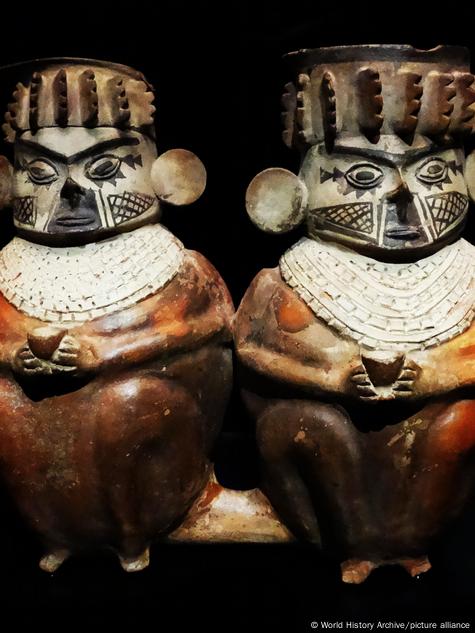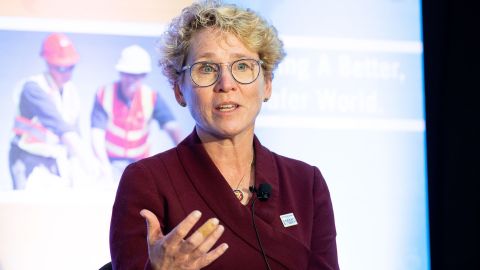Toronto-Dominion Bank said Monday it agreed to pay more than US$1.2 billion to settle a lawsuit by investors claiming it aided R. Allen Stanford’s $7 billion Ponzi scheme more than a decade ago.
Settlements also were reached with HSBC Holdings Plc, which will pay another $40 million, and Independent Bank Group Inc., formerly known as Bank of Houston, which will pay $100 million, according to Ralph Janvey, the court-appointed receiver for Stanford International Bank.
The deals were disclosed the same day the suit against the three banks was set for trial in Houston, 14 years after the collapse of Stanford’s scheme to divert billions to support his lavish lifestyle. He was convicted of fraud and money laundering in 2012 and is serving a 110-year sentence.
The banks, which denied wrongdoing, were accused of ignoring red flags for years.
According to the lawsuit by investors, Stanford promised above-market returns on certificates of deposit the banks should have known were bogus, especially given the unusually massive wire transfers and daily shipments of bags crammed with investors’ checks that flowed from the Texas financier’s bank on the Caribbean tax haven of Antigua to his US accounts.
Including the three settlements, Stanford investors will recoup $1.6 billion from financial institutions accused of aiding the fraud. Societe Generale Private Banking (Suisse) said Feb. 21 it will pay $157 million, and Trustmark National Bank said in December it will pay $100 million. Neither admitted wrongdoing.
The settlements are “nothing short of a monumental recovery,” Kevin Sadler, the lead attorney for the receiver and the investors in the case, said in an emailed statement.
If the trial had gone ahead this week, investors were going to ask jurors to award damages of as much as $10 billion each against TD and HSBC, and up to $6.5 billion against Independent Bank, Sadler said.
'ROUTINE BANKING SERVICES'
In a statement Monday, TD Bank said it “denies any liability or wrongdoing with respect to the multi-year Ponzi scheme operated by Stanford.” The Canadian bank said it “elected to settle the matter to avoid the distraction and uncertainty of continuing a long legal proceeding.”
TD Bank said it “provided primarily correspondent banking services to Stanford International Bank Limited and maintains that it acted properly at all times.” It cited an earlier trial in Canada where the court “ruled entirely in TD’s favor and found no liability.”
Independent Bank settled “to avoid the cost, risks and distraction of continued litigation,” it said in a regulatory filing Monday. “The company believes the settlement is in the best interests of the company and its shareholders,” will be tax-deductible and won’t impact the bank’s capitalization, it said.
Toronto-Dominion shares were little changed at C$91.14 at 9:41 a.m. in Toronto trading, while Independent Bank Group rose 0.5 per cent to $60.79 in New York.
A representative of HSBC couldn’t be reached immediately for comment. In earlier court filings, all the banks claimed they simply “provided routine banking services” to Stanford “and did not know – and could not have known – about the Ponzi scheme.”
Investors alleged the banks “had actual knowledge of the wrongdoing” by Stanford, his aides and entities and “nevertheless, aided and stood by and watched” while Stanford engaged in a systematic pattern of account activities that conflicted with the company’s stated business model, according to a summary of the claims by US District Judge Kenneth Hoyt in November.
In their lawsuit, the investors claim the banks should have seen the signs that Stanford’s operation was a sham. For one, Stanford International Bank’s CDs paid 11.5 per cent interest in 2005, allowing the financier to claim they outperformed the S&P 500 by 13 per cent from 2000 through 2005.
CD holders were also in the dark about where their money was distributed, according to the suit. Between January 2008 and February 2009, court records show Stanford deposited about $1.7 billion in CD sale proceeds into a TD bank account instead of keeping the funds in the Caribbean bank investors thought held their money.
MOVING MONEY
In 2008, about $474 million was shifted from the TD account to SIB’s Bank of Houston account, and then mostly distributed to various Stanford entities. One was Stanford Financial Group, a broker dealer, which got at least $47.5 million to cover operating expenses and as capital for its own Trustmark account.
According to investors, email records from 2006 indicate Trustmark had expressed “concerns” with Stanford entities about its unusual pattern of “wire activity.”
At its peak in December 2008, SIB claimed to have 30,000 clients from 131 countries and $8.5 billion in assets, mostly from sales of CDs. But instead of putting the money in conservative, liquid assets as promised, Stanford and his lieutenants threw money into risky ventures, vanity projects and island resort developments, most of which never earned a dime.
According to evidence at his criminal trial, Stanford lived large, spending as much as $2 billion of investor money on a jet-set lifestyle that included five overlapping families, yachts, private islands, and sponsorships for charity golf tourneys, professional cricket teams, celebrity golfers and tennis players.
BRIBING REGULATORS
Stanford also plowed investors’ funds into hospitals and infrastructure on Antigua, where he bribed auditors and regulators to hide his scheme. Antigua knighted him, and he leveraged that “Sir Allen” aura to misdirect U.S. investigators and enthrall busloads of unsophisticated retirees with catered lunches and dog-and-pony shows at his Houston headquarters.
His scheme collapsed during the financial crisis in late 2008, when investors began cashing CDs at an unsustainable rate and Stanford was forced to halt redemptions. In a bid to staunch the bleeding, Stanford told nervous employees at an all-hands meeting that SIB had $5 billion in “excess liquidity,” while his controller was sending frantic texts telling him it had just $173 million on hand. In February 2009, US regulators seized Stanford’s financial empire, ending his two-decade run.
The US Securities and Exchange Commission appointed a receiver to recover assets for investors. If the five bank deals win court approval, the receiver will have collected more than $2.7 billion through settlements, claw-back litigation and the sale of Stanford assets, including more than 100 mostly money-losing companies and properties scattered across the Caribbean and Latin America.
At least $340 million has gone to pay attorneys and the receiver, leaving just pennies on the dollar for losses by SIB’s 18,000 remaining investors.
Stanford has argued in court filings that he could’ve paid everyone back in full if the SEC hadn’t shut him down and liquidated his businesses.
The case is Rotstain et al v Trustmark National Bank et al, 4:22-800, US District Court, Southern District of Texas (Houston).
--With assistance from Madlin Mekelburg and Kevin Orland.










